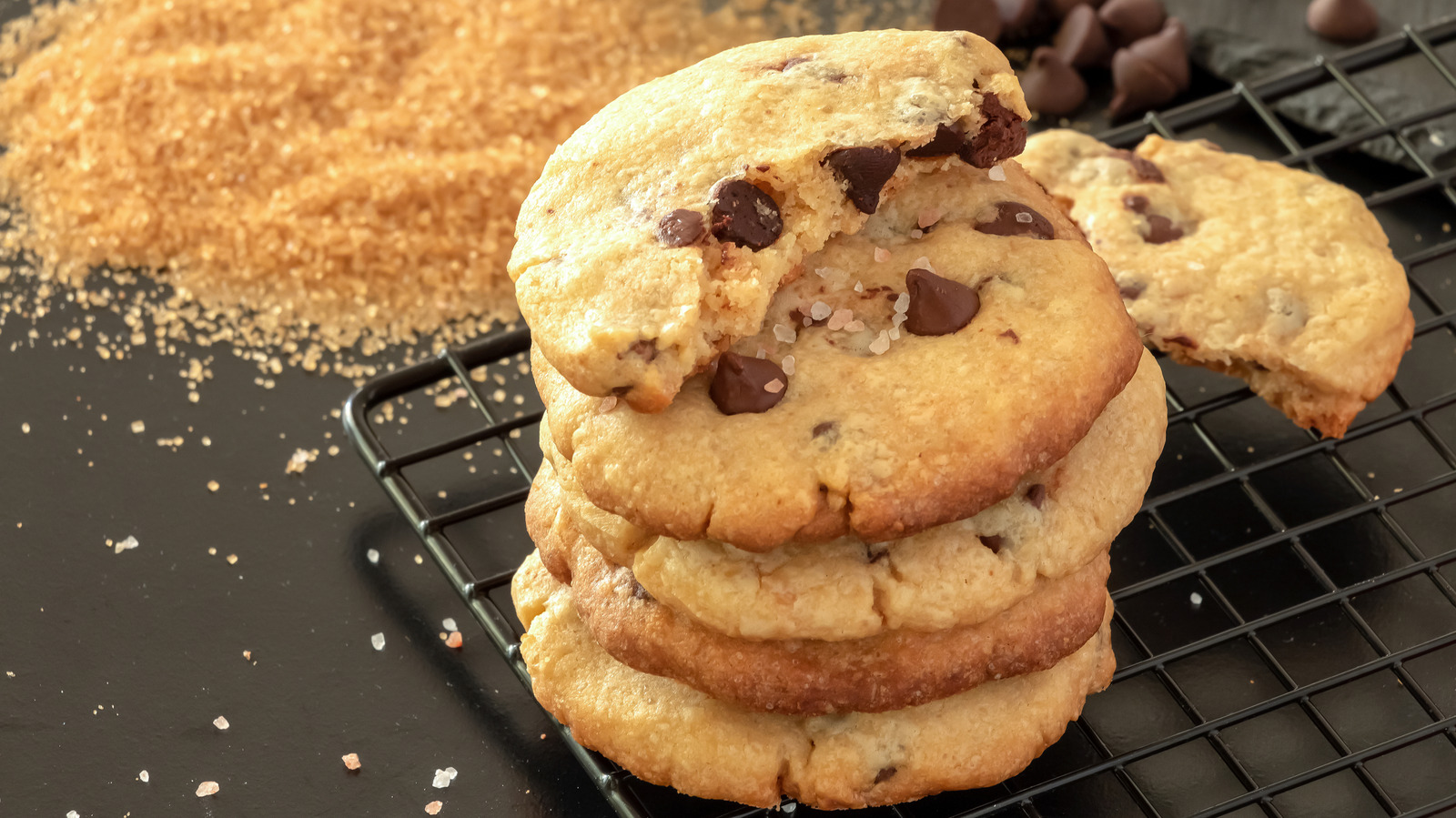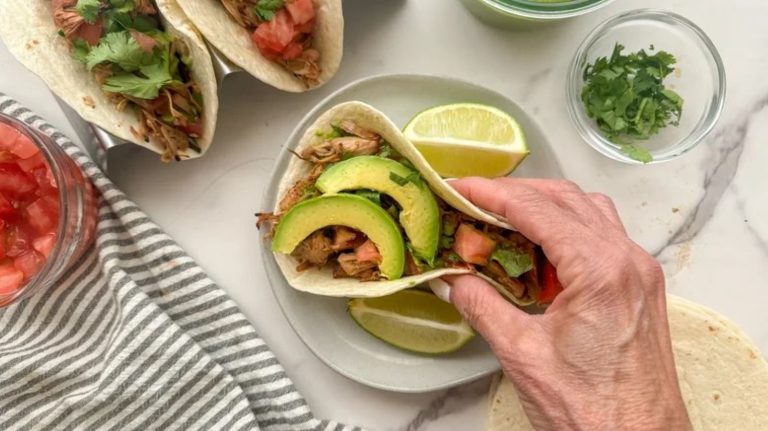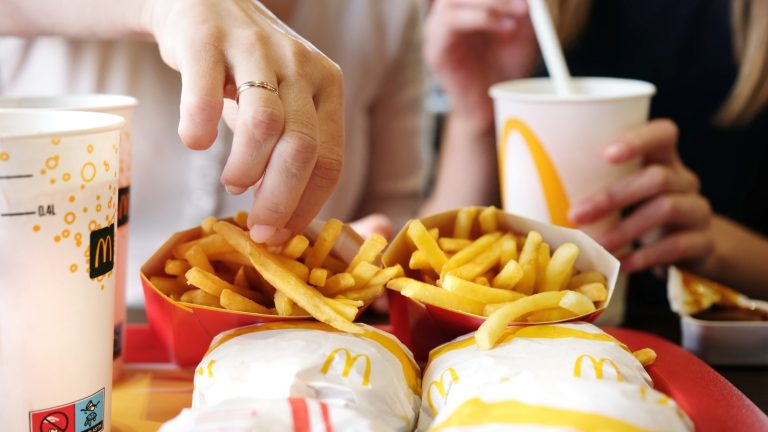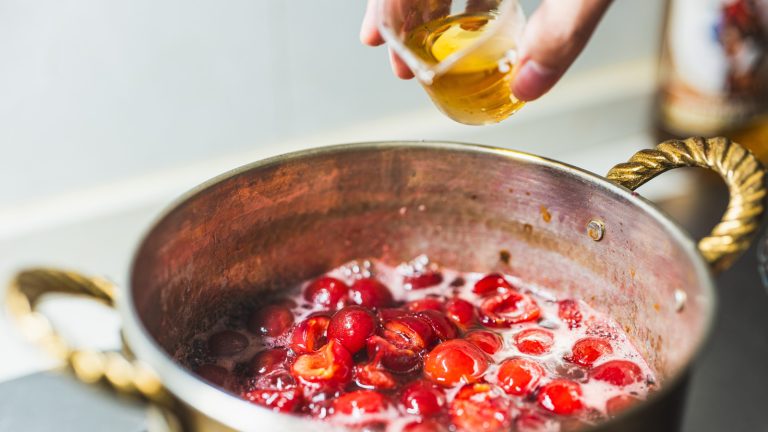We may receive a commission on purchases made from links.
Stepping into a coffee shop, how often have you stared breathlessly at the diamond-encrusted muffins gleaming from the display case? This is where, without even realizing it, you’ve probably seen (and eaten) turbinado sugar. Less processed than its lighter cousin, granulated sugar, turbinado’s lack of processing grants whatever it touches a homespun flair and an amber twinkle. You might be inclined to jazz up coffee’s bitter edges with a spoonful of Sugar in the Raw and leave it at that. But for bakers — and professional ones, to boot — getting imaginative is all part of maximizing this unique ingredient in desserts for a subtle crunch.
We called in experts to dispense their opinions on batters, pastries, and other baked goods where this rustic sugar sparkles. “I love using turbinado sugar in baking because it brings both texture and depth of flavor that standard white sugar just doesn’t offer,” raved Jessica Randhawa, owner and head chef at recipe site The Forked Spoon. “Its subtle molasses notes and golden crystals give baked goods a rustic sweetness and a gorgeous, slightly crunchy finish.”
The flecks remain undefeated for aesthetic purposes, too, according to Natasha Kravchuk, who runs the cooking website Natasha’s Kitchen. “It adds little pops of crunch and a sparkly finish that makes it look like you bought it in a fancy bakery,” she said. Here’s how to incorporate turbinado sugar into your own home-baked goods.
Sprinkle turbinado sugar on muffins and banana bread
Not quite cake, not quite bread, quick breads fall somewhere in between. They’re carb-y and sweet, and just sturdy enough to fuel your morning commute to the office. That’s why, if your banana bread recipe could use a little lift, turbinado crackles are poised to become your secret weapon to intensified crunch. Everything from apple cinnamon muffins to pumpkin bread would benefit from a smart dusting of this sugar to add a slight sparkle — and mouthwatering contrast.
As our experts reasoned, quick breads harbor a delectable moistness, and this spongy consistency primes them for a crisp, glistening sugar coating. What’s more, the way it caramelizes in the oven helps to enhance the sweeter qualities of your recipe. “It gives baked treats deeper color while keeping the batter light and can create a sweet and crackly crust,” noted Natasha Kravchuk of Natasha’s Kitchen.
For The Forked Spoon, Jessica Randhawa is choosy when handling turbinado sugar. She told us that she typically utilizes the sweetener more as a finishing step to cap off the presentation. But with some discretion, a healthy shake on top of a lemon pound cake or gingerbread loaf is just the ticket for ethereal shine. See it for yourself once the baking is complete. “It caramelizes slightly in the oven, creating a sweet, golden crust that makes each bite feel a little more special,” Randhawa said.
Shake it onto shortbread and cookies
Rarely do homemade cookies need any extra accoutrements to dazzle (other than a glass of milk, that is). But for your next batch, maybe try elevating them with an ample dusting of turbinado sugar. By reinforcing the golden, buttery crunch of your cookie, the sweetener heightens the flavor and mouthfeel in spades. And it’s ridiculously versatile too, considering the wide range of recipes professionals attest to incorporating the rustic sparkles into. “I’ll roll the edges of cookie dough balls in it before baking or lightly press it into the tops, especially on sugar cookies, molasses cookies, or shortbread,” explained Jessica Randhawa. “It adds that tiny bit of resistance when you bite into the cookie, and visually, it gives them a more artisanal look.”
This “built-in bling” is also what draws Natasha Kravchuk to roll the glamorous morsels into her cookie dough before baking. From her experience in the kitchen, the crystals shimmer beautifully on beginner-friendly snickerdoodles, while chewy gingersnap cookies aren’t immune to their spell, either. Shake turbinado sugar on at the end if you like, but for a sumptuous golden-brown tray, applying it before baking is the move.
Moral of the story? If you’re not into over-complicating your treats but still desire some flair to help them stand out, turbinado is your friend. It’s an extra touch that dials up the delight.
Give your pie crust a glittery sheen
Apple, blueberry, or cherry — these are a handful of fillings composing the highlight reel of classic all-American pies. But the crust is equally significant. If you’re seeking a humble flourish to showcase the buttery pastry holding it together, that’s where turbinado sugar comes in to work its magic. As any home baker knows, achieving the flakiest pie crust can offer its share of mishaps if one isn’t careful. But with turbinado sugar in your arsenal, a delicate crunch — and patisserie-level gleam — will take your masterpiece to the center of the table.
With this step, you’ll want to sprinkle the sugar on prior to putting your pie in the oven. Both Jessica Randhawa and Natasha Kravchuk instruct a more or less identical process when prepping the pastry for baking. They suggest gathering a liquid ingredient to brush onto the pie dough before dusting on the turbinado sugar. Whisking an egg to create an egg wash is standard, but milk would also be doable. The wet component will act as a binding agent (regardless of the one you choose), where it will allow the granules to stick and form that lacy, iridescent layer. Assuming your goal is to mirror the resplendence of top-tier bakehouses, there’s no reason not to wrap your crust in glitter.
Toss it in streusel for a sparkly pop
Though the name is confusing, coffee cake is a fantastic accompaniment to the daily cappuccino that fuels our day. This comforting little baked good is swirled with cinnamon and brown sugar, but the real kicker is the crumbly spiced coating spread out on top. Streusel topping doesn’t consist of much other than brown sugar, butter, and seasonings like salt and allspice, so a blast of turbinado sugar would fit in beautifully. Not only does its flavor match the molasses-y profile of the cake, but it yields a chunkier consistency that will make your topper infinitely more irresistible.
Once again, reaching for golden turbinado is a surefire trick to embracing hefty, crackly goodness — the ultimate compliment to coffee cake’s melt-in-your-mouth fluffiness. “It holds its shape and adds a subtle crunch that balances soft interiors,” says Jessica Randhawa. Natasha Kravchuk also highlighted the pop of texture the granules offer this sweet breakfast favorite: “I also love to toss a spoonful into streusel for crunchy bits in every bite.” Make a mini-swap, tossing in the coarser morsels to mix with the brown sugars and spices. They’ll blend right in, albeit with a tell-tale chomp that unleashes instant love with each forkful.
Level up icing for cinnamon rolls
If you didn’t think a gooey tray of cinnamon rolls could get any better, think again. Another trick our experts propose is leveling up the icing with turbinado sugar, which is a great fix for boosting the depth and taste of your homemade icing. Sugary glazes like this can veer quite sweet, which explains why Natasha Kravchuk is a fan of the raw alternative to make a variation that tends to be bolder. “The molasses in it adds deeper flavor than plain sugar, so it adds a nice twist,” she said.
Cake icing and frostings exhibit a few differences, and for the former, it’s often a thinner consistency carving out this distinction. Powdered sugar, plus a liquid element, is the basic equation for icing, while frostings tend to embrace fats, like butter. True, stirring turbinado sugar into your homemade icing may invite a few challenges if you’re already not prepared. Because the specks are pretty big and rougher in texture, they’ll take more time to break down into a homogenous sauce. But assuming you switch your KitchenAid mixer on high (and stay patient), blitzing the sugar in is bound to incite more pay-off than problems.
Lace it into your pie crust
We’ve touched on turbinado sugar’s decorative strengths in length. For instance, the sweetener’s superpower includes, and is not limited to, prettying up the appearance of a homemade pastry. But that’s purely surface-level. How about lacing the inside of the crust with a little glitter? Sneaking some turbinado into your pie vessel is effective at granting a vibrant pop and imbues your crust with an electric sheen. This applies to pastry-based crusts, as well as alternatives made out of other sweet ingredients: think crushed Nilla wafers or graham crackers.
Alternatives to the flaky pie shells we love are a delicious canvas for fluffy, chilled desserts — a plain cheesecake, chocolate pudding, or a tequila-infused key lime pie are just a few filling choices. Dashing in flaky turbinado sugar is great for lending the crust extra dimension, while playing off the crunch from the baked cookies or graham crackers. Watch it gleam and glimmer like lights at a party.
Additionally, Jessica Randhawa has implemented the practice whenever she makes smaller, single-serving pastries. One delicacy where she folds turbinado into the mix is galettes, open-faced pastries where dough is manually crimped around a well of fruity filling. The slight bit of grit, she said, made all the difference.
Make a crackly topping for fruit cobbler
When asked about surprising culinary successes using turbinado sugar, our experts prove the revelations in sweet treats are borderline endless. Look no further than Jessica Randhawa, who relayed a particularly divine baking experience involving a peach cobbler biscuit topping. In her words, “the sugar gave the biscuits a gorgeous crust and the whole dessert an unexpected layer of texture.”
Cobblers, crumbles, and crisps exist on the family tree of rustic, fruit-driven desserts, and despite some differences, the molasses-y sweetener flatters all three. The jammy interiors, the buttery layer of biscuits (or a hearty oatmeal crust) — these aspects are rustic, and thereby favorable to the confection’s less-processed qualities.
In this scenario, you can treat the turbinado sugar much like how you would handle a fruit pie or pastry. As discussed above, the surface layer that covers your cobbler is very adaptable, meaning whatever ingredients are strewn across the top won’t be disrupted by the crispier addition. Toss them in, bake until golden, and witness the fireworks unleashed by that glimmering, caramelized coat. Delicacies featuring fruit are destined to sing. When extra sugar gets involved, though, there’s no telling how high your dessert-making prowess can go.
Boost the richness of caramel sauce
Visit any ice cream parlor around, and you’ll notice one syrup never strays from the vast menu of mix-ins. Caramel sauce is just melted sugar, but it transforms into a lusciously sticky glaze we can’t get enough of. Folks who might crave extra pizazz in their drizzle can add turbinado when attempting it from scratch. Your bag of pure cane sugar? You won’t be needing it. Set it to the side, and pour the coarse sugar in with the water to simmer.
“It can work if you’re going for a rich, molasses-kissed flavor,” Jessica Randhawa said, who noted that the harsher granules can be a downside when they’re employed in saucier contexts. Assuming you swap out regular sugar for turbinado, it’s crucial to ensure that the particles completely melt down before serving it. Unless, of course, you’re not bothered by a grittier mouthfeel — that’s some of the appeal of turbinado sugar, and why dessert lovers flock to it again and again. “I’ve had success using it in caramel sauces and homemade brown sugar syrups for coffee drinks, but I do recommend giving it time to fully dissolve,” she added. There’s always an opportunity to ignite brown sugar goodness into our sweets, even in liquid form.
Put it on toasted nuts
Snap, crackle, and pop? Such onomatopoeia recalls Rice Krispies’ impish trio, but it also accurately defines our last trick for using turbinado sugar to its full advantage. On perfectly roasted nuts, the raw sugar casts a downright lustrous veil. Savory and toasted aromas go hand-in-hand with sweet flavors, and this cross-section comes to life with candied nuts of all kinds — almonds, peanuts, cashews, the list goes on and on.
Jessica Randhawa and Natasha Kravchuk rave over the combination as both delicious and immensely easy to accomplish. Just bake them on a sheet and get to sprinkling. In some situations, toppings might require a syrup of some sort to glue them down, but as Kravchuk points out, it isn’t necessary when the nuts are broiled on high heat. The warmth radiating off the nuts forms an extra-toasty surface, letting the coarse tidbits cling and preserve a coating that’s crunchy and gorgeously translucent all at once.
Now, the possibilities a batch of toasted nuts brings to goodies are undeniable. They’ll give your ice cream sundae a deluxe spin, zhuzh up a homemade trail mix, or imbue a gourmet bent to layer cakes or brownies. And for an oh-so-fancy garnish, how simple are they to put together?





